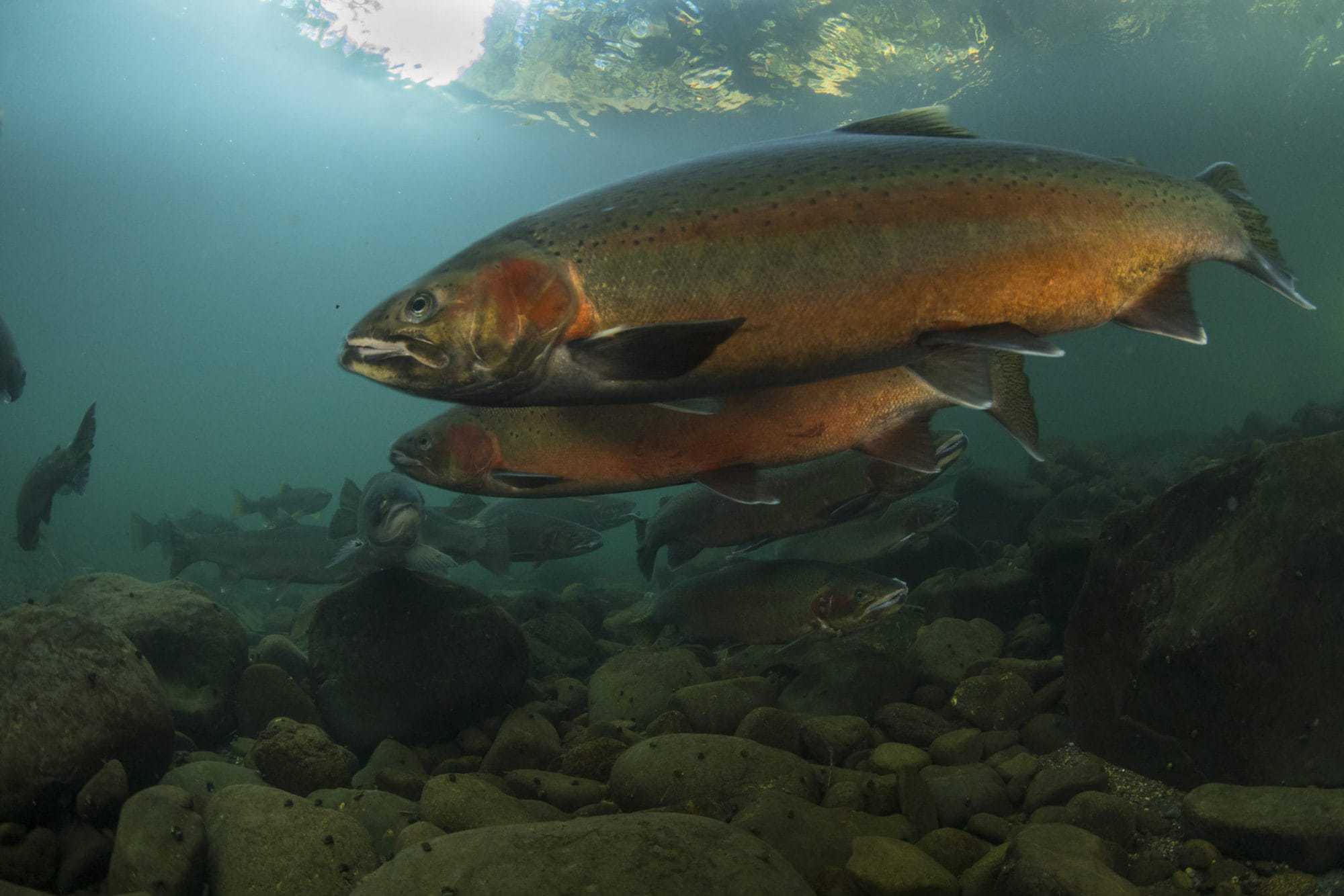
February 12, 2019
For Immediate Release
Media Contacts
Kurt Beardslee, Wild Fish Conservancy – (425) 788-1167, [email protected]
Brian A. Knutsen, Kampmeier & Knutsen, PLLC – (503) 841-6515
Today, Wild Fish Conservancy provided a letter to the Washington Department of Fish and Wildlife (WDFW), notifying the agency of our intent to file suit for violations of the Endangered Species Act (ESA) resulting from ongoing operation of the State’s hatchery summer-run steelhead program in Puget Sound. This hatchery program uses the non-native Skamania hatchery steelhead stock, which the National Marine Fisheries Service (NMFS) has recognized as a threat to the survival and recovery of ESA-listed Puget Sound steelhead Distinct Population Segment (DPS). Moreover, this program is being conducted without the necessary ESA approval of operational plans for each hatchery facility (known as Hatchery Genetic Management Plans) from NMFS.
Specifically, we intend to file suit for violations of section 9 of the ESA, which prohibits the take of endangered and threatened species. We urge WDFW to contact us before the expiration of the 60-day period to discuss how to timely eliminate the threat to listed Puget Sound steelhead posed by this hatchery program.
As an organization dedicated to the recovery and conservation of wild fish in the Pacific Northwest, we have grave concerns over the impacts currently being caused to ESA-listed Puget Sound steelhead by the use of Skamania hatchery stock. Native Puget Sound summer-run steelhead populations are few in number and their abundance is particularly depressed compared to winter-run populations that make up the majority of populations in the threatened Puget Sound steelhead DPS. Native summer-run steelhead may even need conservation management distinct from that focused on winter-run populations for their unique and significant contribution to the diversity of the DPS be secured. The Skamania hatchery programs pose a direct threat to the survival of these populations.
Over the past thirty years, Puget Sound steelhead have declined at an alarming rate, to the point where abundance between 1980 and 2004 was 4% of what is was in 1900. This steep decline led to their listing as ‘threatened’ under the Endangered Species Act in 2007. Unfortunately, abundance has continued to decline since the 2007 listing, with the most recent five-year average less than 3% of 1900 levels.
WDFW operates several hatchery programs in Puget Sound that utilize Skamania hatchery steelhead, which was founded in the 1950’s from wild fish collected in tributaries of the lower Columbia River. The use of this stock, which is genetically dissimilar to wild Puget Sound steelhead and considered to be ‘highly domesticated’ by NMFS, is undermining attempts made to promote Puget Sound steelhead recovery, and is instead contributing to the species’ continued decline.
Among other impacts, we assert that Skamania stock are harming Puget Sound steelhead through genetic introgression, ecological interactions such as competition and predation, agency collection and monitoring activities, hooking and capture during recreational fisheries, and disease transmission.
We are far from the only ones concerned about the impacts these hatchery programs may be having on threatened Puget Sound steelhead. In the most recent 5-year review of the status of Puget Sound steelhead, NMFS concludes that “…Skamania and Chambers creek stocks pose threats to natural origin steelhead population viability.” Further, a 2017 letter from NMFS to WDFW expressing concern over the potential impacts of the hatchery programs states that “the production and release of hatchery-origin Skamania stock early summer steelhead into the Snohomish basin has negatively affected the abundance, diversity, spatial structure, and productivity of the winter and summer steelhead populations…”.
Given the cultural and ecological importance of Puget Sound steelhead to the State of Washington and the Pacific Northwest at-large, we see this action as necessary in order to address the ongoing harm being done to this cherished species, and to give Puget Sound steelhead a meaningful chance at recovery.
“We agree with NOAA’s concerns over WDFW’s Skamania steelhead hatchery programs,” said Kurt Beardslee, Executive Director of Wild Fish Conservancy.
“Only five wild summer-run steelhead populations are known to survive in Puget Sound at present and they are each at record low levels of abundance. This is a shadow of the numerous summer-run populations that existed historically throughout most of Puget Sound. The remaining wild summer steelhead populations are listed as threatened under the Endangered Species Act, yet WDFW knowingly continues a program that’s driving Puget Sound wild summer steelhead closer to extinction.
“WDFW needs to be part of the solution, not the problem.”
###
Wild Fish Conservancy is represented in this matter by the law firm of Kampmeier & Knutsen, PLLC, with offices in Portland, Oregon and Seattle, Washington.
Join our mailing list to recieve important updates on our work, the latest wild fish news, & opportunities to take action to support wild fish.
This site is protected by reCAPTCHA and the Google Privacy Policy and Terms of Service apply.
Wild Fish Conservancy is recognized as a 501(c)3 non-profit by the IRS